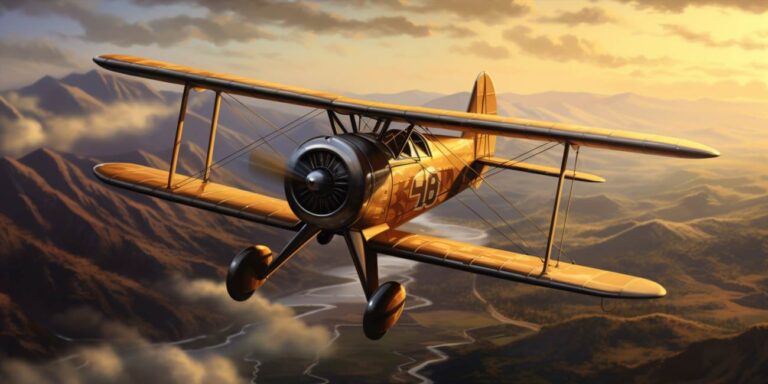The engine in such aircraft serves as the heart, typically featuring a single powerplant driving the propeller. Their simplicity and affordability make them popular among pilots in training and for recreational flights. However, comprehensive knowledge is vital before handling these machines.
Weight and balance play pivotal roles. Understanding the distribution of weight and ensuring it remains within specified limits guarantees stability during flight. This involves considerations of passengers, cargo, and fuel, as exceeding the aircraft’s limitations could compromise safety.
| Factor | Importance |
|---|---|
| Weather conditions | Crucial for safe flight, pilots must assess weather patterns meticulously to avoid hazardous situations. |
| Pre-flight inspections | Conducting thorough checks before takeoff ensures the aircraft’s airworthiness, addressing potential issues. |
| Navigation | Proficiency in chart-reading, GPS usage, and understanding navigation aids aids in maintaining course and destination. |
Furthermore, mastering emergency procedures becomes imperative. Pilots must be well-versed in handling unforeseen circumstances, including engine failure or other malfunctions.
Aspiring aviators undergo extensive training to comprehend the intricacies of flying a single engine piston aircraft. Ground school education covers aerodynamics, flight instruments, regulations, and more. Practical flight training refines skills in takeoff, landing, maneuvers, and emergency protocols.
Acquiring a pilot’s license involves passing written exams and demonstrating proficiency in flight. Continuing education remains crucial for pilots to stay updated on regulations, technology advancements, and safety protocols.
Piloting techniques and skills required for single engine piston aircraft
Piloting a single-engine piston aircraft demands a comprehensive set of skills and techniques to ensure a safe and efficient flight. Mastering these elements is crucial for any aspiring pilot looking to navigate the skies confidently and competently.
1. Pre-flight Inspection: Before taking off, a thorough pre-flight inspection is paramount. This involves checking the aircraft’s structural integrity, fuel levels, engine condition, and control surfaces. The pilot must ensure that all systems are functioning correctly, identifying and addressing any discrepancies.
2. Communication: Clear and effective communication is vital for safe flights. Pilots need to communicate with air traffic control, fellow aviators, and ground personnel. Using proper radio phraseology and understanding aviation terminology is essential for seamless interaction in the airspace.
3. Takeoff and Climb: A successful takeoff requires precise control inputs. Pilots must manage engine power, maintain the correct pitch attitude, and ensure a straight takeoff roll. During the climb phase, attention shifts to altitude control and navigation, adjusting the aircraft’s attitude to achieve the desired climb rate.
4. Aircraft Systems: Understanding the single-engine piston aircraft’s systems is crucial. Pilots should be familiar with engine operation, fuel management, electrical systems, and navigation instruments. Regular checks during flight help monitor these systems and identify issues promptly.
5. Navigation: Navigating a single-engine piston aircraft involves interpreting charts, using navigation instruments, and understanding airspace restrictions. Pilots must be adept at determining their position, planning routes, and adjusting navigation equipment as needed.
6. Instrument Flight: Proficiency in instrument flying is essential for handling adverse weather conditions or low visibility. Pilots should be comfortable relying on instruments for altitude, airspeed, and attitude information, ensuring precise control of the aircraft without external visual cues.
7. Maneuvering: Mastering various flight maneuvers is a cornerstone of piloting skills. This includes turns, climbs, descents, stalls, and recovery procedures. Practice and familiarity with the aircraft’s performance envelope contribute to a pilot’s ability to handle diverse in-flight situations.
8. Emergency Procedures: Pilots must be prepared to handle emergencies calmly and efficiently. Training includes engine failures, electrical issues, and other critical scenarios. Knowing the appropriate emergency procedures and practicing them regularly is essential for a pilot’s readiness.
9. Landing: A successful landing requires precision and skill. Pilots need to manage their approach, control descent rates, and execute a smooth touchdown. Factors such as wind conditions, runway length, and obstacles must be considered for a safe and controlled landing.
10. Currency and Continued Learning: Staying current with regulations and continuously enhancing skills through training is crucial. Pilots should engage in recurrent training, stay informed about updates in aviation technology, and be proactive in seeking knowledge to maintain a high level of proficiency.
Mastering the techniques and skills required for piloting a single-engine piston aircraft is an ongoing journey that combines theoretical knowledge with practical application. By honing these essential skills, pilots can navigate the skies with confidence, ensuring both safety and success in their aviation endeavors.
Steps for getting licensed to fly single engine piston aircraft
Embarking on the journey to become a licensed pilot involves a meticulously structured process, encompassing various crucial steps. One of the initial phases is enrolling in a comprehensive pilot training program that caters to aspiring aviators aiming to master the art of flying single-engine piston aircraft.
Throughout the pilot training program, individuals undergo rigorous practical and theoretical training. Classroom sessions delve into aviation fundamentals, meteorology, and navigation, while hands-on flying experiences hone the skills needed to navigate the skies confidently. This immersive approach ensures a well-rounded education, preparing future pilots for the challenges that await them.
As aspiring aviators progress through their training, a pivotal aspect involves accumulating the requisite flight instructor hours. These hours, guided by experienced flight instructors, provide invaluable insights into aviation nuances, enhancing the pilot’s ability to make informed decisions while in command. The mentorship received during these flight instructor hours forms a crucial bridge between theoretical knowledge and practical application, fostering a deep understanding of aviation dynamics.
Successfully completing the designated flight instructor hours opens the door to the next significant step: tackling the written pilot exams. These exams evaluate the pilot’s theoretical knowledge, covering a spectrum of subjects including regulations, aerodynamics, and emergency procedures. Rigorous preparation is essential to navigate these assessments successfully, requiring a profound understanding of aviation theory and a commitment to mastering the intricacies of piloting.
The written pilot exams serve as a critical checkpoint in the journey towards licensure, ensuring that aspiring pilots possess the knowledge necessary for safe and competent flight operations. Performance in these exams reflects not only individual dedication but also the efficacy of the pilot training program and the guidance received during flight instructor hours.
In essence, the path to obtaining a license to fly single-engine piston aircraft involves a meticulous progression through a structured pilot training program, accumulating essential flight instructor hours, and successfully navigating the challenging terrain of written pilot exams. Each stage builds upon the foundation laid in the preceding steps, cultivating well-rounded and proficient aviators poised to embark on their flying careers.
Choosing the right single engine piston aircraft model for your mission
When selecting the ideal single-engine piston aircraft for your mission, a comprehensive cessna models comparison is crucial. Cessna, a renowned name in the aviation industry, offers a diverse range of models, each catering to specific needs. Understanding the nuances of these models is vital to make an informed decision.
Let’s delve into the realm of aircraft performance specifications. In this context, performance encompasses various aspects such as speed, range, payload capacity, and fuel efficiency. For instance, the Cessna 172 Skyhawk, a stalwart in the lineup, boasts impressive endurance and stability, making it an excellent choice for training and short-haul flights.
For a more spirited performance, the Cessna 182 Skylane steps up with a higher cruise speed and enhanced load-carrying capabilities. It’s essential to align the aircraft’s specifications with your specific mission requirements. Whether it’s recreational flying, business trips, or training exercises, matching the aircraft’s capabilities with your needs ensures optimal performance.
Transitioning to operating costs, an aspect that can significantly impact your overall aviation experience. While the initial purchase price is a noteworthy consideration, it’s equally essential to evaluate the day-to-day operational expenses. These include fuel consumption, maintenance, insurance, and storage fees.
Comparing Cessna models in terms of operating costs, the Cessna 172 typically emerges as a cost-effective option for training purposes. Its fuel efficiency and relatively lower maintenance expenses make it a popular choice for flight schools and individual pilots seeking an economical solution.
On the other hand, the Cessna 182, with its higher performance capabilities, may incur slightly elevated operating costs. However, the increased efficiency and speed could potentially offset these expenses for missions where time and performance are critical.
Presenting this data in a table format offers a concise overview:
| Aircraft Model | Performance Specifications | Operating Costs |
|---|---|---|
| Cessna 172 Skyhawk | Stable, suitable for training and short-haul | Cost-effective, lower maintenance |
| Cessna 182 Skylane | Higher cruise speed, enhanced load-carrying | Slightly higher, balanced by increased efficiency |
See also:
- Single engine cessna models – overview and comparison
- Flying solo: your guide to owning a single-engine cessna plane
- What is a piston aircraft: configuration and working principles
- The best cessna 152 price on the market cessna 152: select the cheapest offer
- How to buy an aircraft: step-by-step guide for beginners





